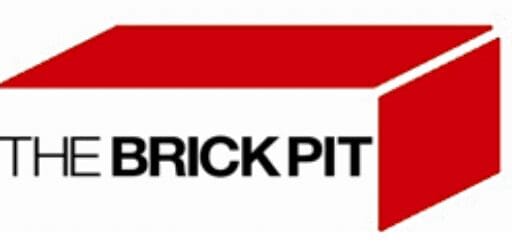How to Avoid Common Pitfalls When Using Recycled Bricks (Without Losing Your Mind)
Hey there, fellow brick enthusiasts! Let’s cut to the chase: recycled bricks are awesome. They’ve got character, history, and that eco-friendly vibe we all love. But let’s be real—using them isn’t always a walk in the park. Between dodgy sourcing, hidden structural issues, and the occasional “why is this brick crumbling like feta cheese?” moment, there’s a lot that can go sideways.
At The Brick Pit here in Australia, we’ve seen it all. We’ve helped folks in Sydney, Perth, Brisbane, and beyond turn their reclaimed brick dreams into reality (and rescued a few DIY disasters along the way). So grab a coffee, pull up a chair, and let’s chat about how to dodge the most common recycled brick blunders—while keeping your sanity intact.
1. Sourcing: Not All Bricks Are Created Equal
Ever tried building a retaining wall with bricks that disintegrate in the rain? Yeah, it’s about as fun as stepping on LEGO. Sourcing quality recycled bricks is half the battle.
Here’s the deal:
- Avoid “mystery bricks”: If a seller can’t tell you where the bricks came from or what they’re made of, walk away. Fast.
- Know your types:
- Sandstock bricks: Rough texture, perfect for rustic projects.
- Red bricks: Classic and versatile, but check for salt damage (more on that later).
- Paving bricks: Thicker and tougher—great for driveways or outdoor spaces.
- Location matters: Searching for “recycled bricks near me”? Prioritize local suppliers (like, say, The Brick Pit) to cut transport costs and reduce your carbon footprint.
Pro Tip: Drop by our yard in Sydney or give us a buzz—we’ll match you with bricks that suit your project and your budget. No sketchy surprises, promise.
2. Skipping the Clean-Up Phase (Big Mistake)
Look, we get it. Scrubbing decades of grime off old used bricks feels about as thrilling as watching paint dry. But skipping this step? That’s like putting ketchup on a gourmet burger—just don’t.
What to do instead:
- Pressure wash gently: Too aggressive, and you’ll strip the brick’s character. Too soft, and you’re just rearranging the dirt.
- Check for contaminants: Mortar remnants, paint splatters, or shudder asbestos in very old bricks.
- Test for efflorescence: Those white salt deposits? Scrub them off with vinegar and water, or they’ll keep coming back like a bad ex.
FYI: We offer pre-cleaned reclaimed bricks for anyone who’d rather skip the elbow grease. Because life’s too short for scrubbing.
3. Assuming “Old” = “Structurally Sound”
Newsflash: Just because a brick survived the 1970s doesn’t mean it’ll hold up your new pergola. Always test before you build:
- Tap test: Hit the brick with a hammer. A clear “ping” = good. A dull “thud” = it’s probably seen better days.
- Water absorption: Soak the brick overnight. If it gains more than 15% weight, it’s too porous for load-bearing jobs.
Best uses for “questionable” bricks:
- Brick edging for gardens
- Decorative walls (non-structural, obviously)
- Pathways where aesthetics trump heavy duty use
Got a big project? Swing by The Brick Pit—we’ll help you sort the gems from the duds.
4. Forgetting That Bricks Have… Feelings? (Sort Of)
Recycled bricks aren’t Lego blocks. They’re irregular, quirky, and demand patience. Trying to force them into a ultra-modern, precision-fit design? Good luck with that.
Design tips for the win:
- Mix and match: Blend red bricks with sandstock for texture.
- Plan for imperfection: Leave wider mortar joints to accommodate uneven shapes.
- Mock it up first: Lay out a small section to spot issues before committing.
Story time: We once had a client in Perth who tried using reclaimed bricks for a sleek, minimalist fireplace. Let’s just say it looked more “abstract art” than “architectural digest.” Learn from their pain.
5. Ignoring Local Climate (Rookie Move)
Australia’s weather isn’t messing around. Humidity in Brisbane, salt air in Sydney, scorching heat in Perth—your bricks need to handle it.
Climate cheat sheet:
| Location | Brick Type | Why It Works |
|—————|———————|———————–|
| Coastal (Sydney) | Sandstock | Resists salt erosion |
| Arid (Perth) | Dense red bricks | Handles heat cracks |
| Humid (Brisbane) | Reclaimed pavers | Drains moisture fast |
TL;DR: Match your bricks to your climate, or Mother Nature will humble you.
6. Overlooking Brick Disposal (Yes, It’s a Thing)
Finished your project? Congrats! Now, what to do with the leftovers?
Options for extra bricks:
- Recycle again: Many councils offer brick disposal services.
- Get creative: Use them for garden borders, BBQ bases, or… modern art?
- Donate: Schools, community gardens, or your neighbor’s DIY obsession.
Shameless plug: If you’re in Australia, The Brick Pit happily takes quality second-hand bricks off your hands. We’ll even pick them up—because lifting heavy stuff is so 2023.
FAQs: Your Burning Questions, Answered
Q: Are recycled bricks safe for structural projects?
A: Mostly, yes—but test first! Use them for retaining walls, foundations, etc., only if they pass strength and porosity checks.
Q: How do I find the closest recycled brick supplier?
A: Google “reclaimed bricks near me” or hit up The Brick Pit. We’ve got yards in Sydney, Brisbane, and Perth, plus delivery across Aus.
Q: Can I use old used bricks for a fireplace?
A: Only if they’re heat-rated. Many recycled bricks aren’t—so double-check or risk a literal dumpster fire.
Wrapping Up: Keep Calm and Brick On
Recycled bricks add soul to any project, but they’re not without quirks. Source wisely, clean thoroughly, and design flexibly. And when in doubt? Give us a shout at The Brick Pit. We’ve been helping Aussies nail their brick goals for years—without the headaches.
Ready to start your project? Grab those reclaimed bricks, avoid these pitfalls, and remember: every chip and crack just adds to the story. Now go build something epic (and maybe send us a pic, yeah?).
Need bricks? We’re your crew. Visit The Brick Pit online or in-person—because life’s too short for bad bricks. 😉


